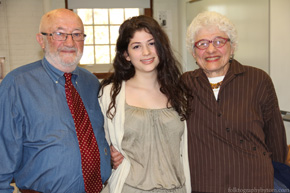On April 22, Dean of Students Kathy Noble announced the election results for class presidents at the Wednesday assembly. Class representative elections (and there are four representatives per class) took place on Friday, May 1.
It is my privilege to announce the most newly elected class presidents following yesterday’s elections.
I’d ask that you join me in congratulation the President of the Class of 2018: Ms. Caroline Channell!
And the President of the Class of 2017: Mr. Cody Cavanaugh!
And finally, the President of next year’s senior class, Class of 2016: Mr. Nate Gordon!
I’d like to thank all of the candidates who ran in these elections and remind them (and others) that they are eligible to run for the four representatives’ seats in each class on the Student Council. Those individuals will speak to classmates during class assemblies on Friday, May 1 with an election to follow during lunch.
Please see your Class Deans for additional information.





